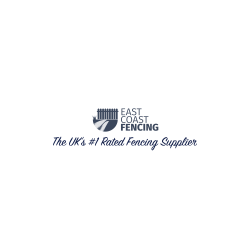Things to Consider When Building a New Fence

Building a new fence around your property is a significant decision that encompasses a variety of factors ranging from practicality and aesthetics to legal requirements. A fence does not only demarcate your property but also plays a crucial role in ensuring privacy, security, and enhancing the overall look of your home garden or perimeter. Whether you're contemplating establishing boundaries or simply aiming to uplift your outdoor space’s appearance, here are essential points to consider before making this substantive addition.
1. Purpose of the Fence
First and foremost, identify the primary reason behind the installation. Is it for enhancing privacy, ensuring the security of your home, keeping pets within a safe precinct, or merely an ornamental addition to enhance your garden's aesthetic appeal? Your specific reason will significantly influence the type of materials, height, and design of the fence.
2. Fence Material Options
Selecting the right material is paramount for both the functionality and look of the fence. Common fencing materials include wood, which offers a classic appearance; aluminium or steel, which are durable and offer a sleek look; vinyl, known for its durability and low maintenance; and composite materials, which can offer the appearance of wood but with added durability and less maintenance.
3. Local Regulations and Permissions
Before moving forward with your fencing project, familiarising yourself with local regulations is crucial. Most local councils have specific guidelines regarding fence height, style, and materials that are permissible. Additionally, if you share boundaries with neighbours, their consent might be required. It is also essential to ensure that the construction does not encroach on public or neighbouring territories, necessitating a precise measurement of your boundaries.
4. Choosing the Right Contractor
Unless you're skilled in DIY projects, installing a fence requires professional assistance. Choosing the right contractor is vital for a successful installation. Look for experienced professionals with solid references and ensure they are familiar with local regulations. It’s advisable to get multiple quotes and discuss your requirements thoroughly before finalising your choice.
5. Maintenance Requirements
Consider the maintenance requirements of the material you choose for your fence. While certain materials like vinyl and composite require minimal upkeep, others such as wood may need regular treatments to maintain their look and longevity. Understanding these requirements ahead of time can help you make an informed decision based on the time and budget you’re willing to dedicate to maintenance.
6. Impact on Property Value and Aesthetics
A well-designed fence can significantly enhance your home's curb appeal and potentially its resale value. Consider the design and colour of the fence and how it complements your home's exterior aesthetics. An out-of-place fence can detract from the beauty of your garden and the overall look of your property.
7. Environmental Factors
Environmental conditions such as soil type, climate, and the area's susceptibility to pests can influence your choice of fencing material and its design. For instance, regions with high humidity levels might not be suitable for certain types of wood, while areas prone to strong winds may require sturdy materials and specific construction techniques.
Conclusion
Building a new fence is a substantial investment that serves multiple purposes, from ensuring privacy and security to contributing to the aesthetic appeal of your outdoor space. Taking the time to consider these pivotal aspects can lead to a more informed decision, ensuring that your fence meets your needs, aligns with local regulations, and adds value to your property in the long run. With the right planning, materials, and professional help, you can install a fence that stands the test of time and enhances the overall charm of your home.














Leave a Comment